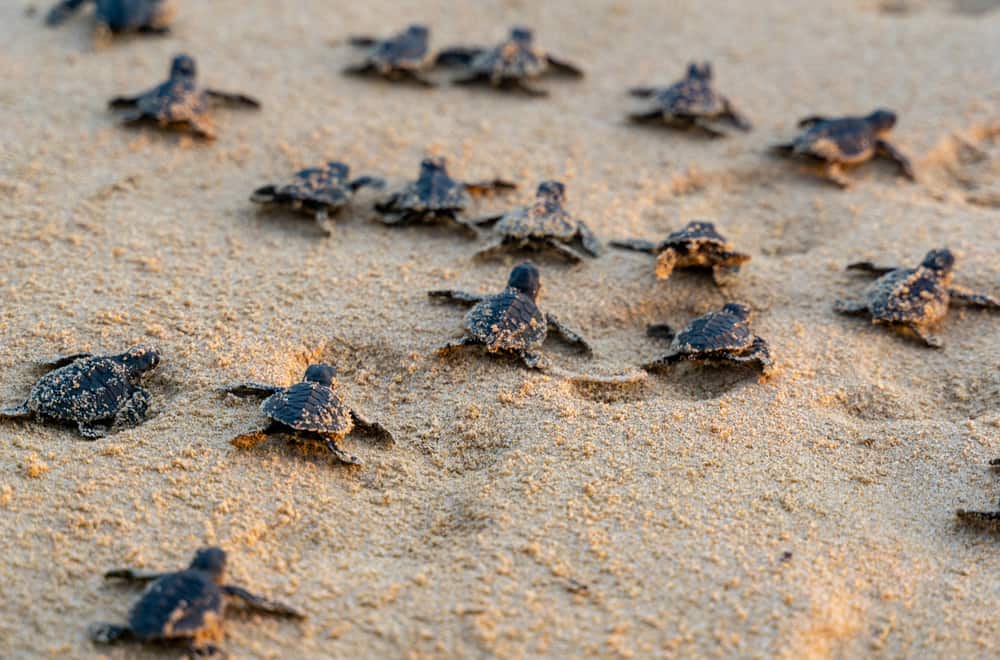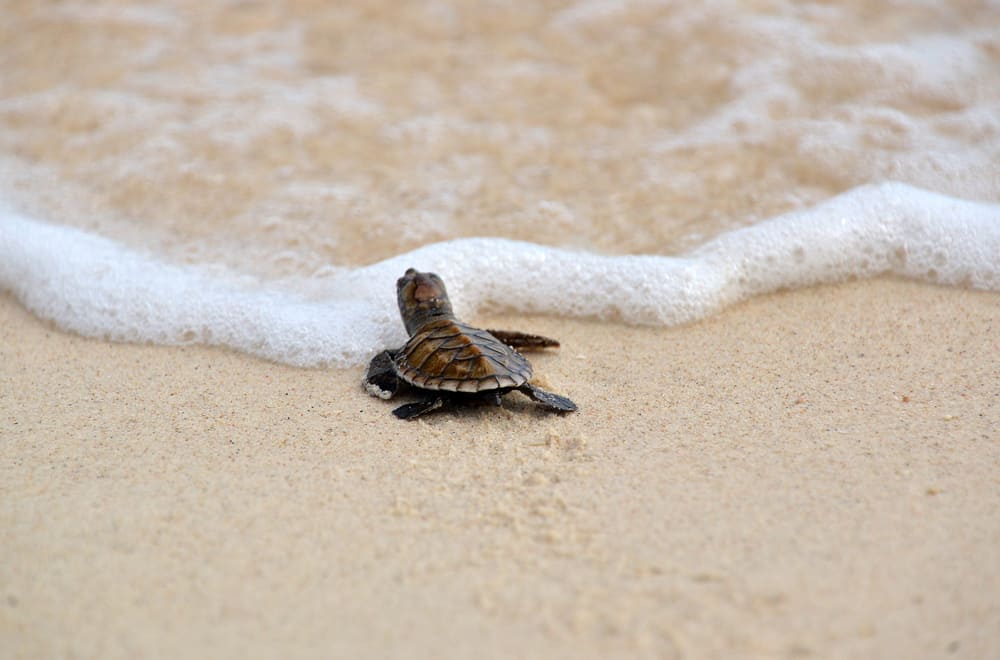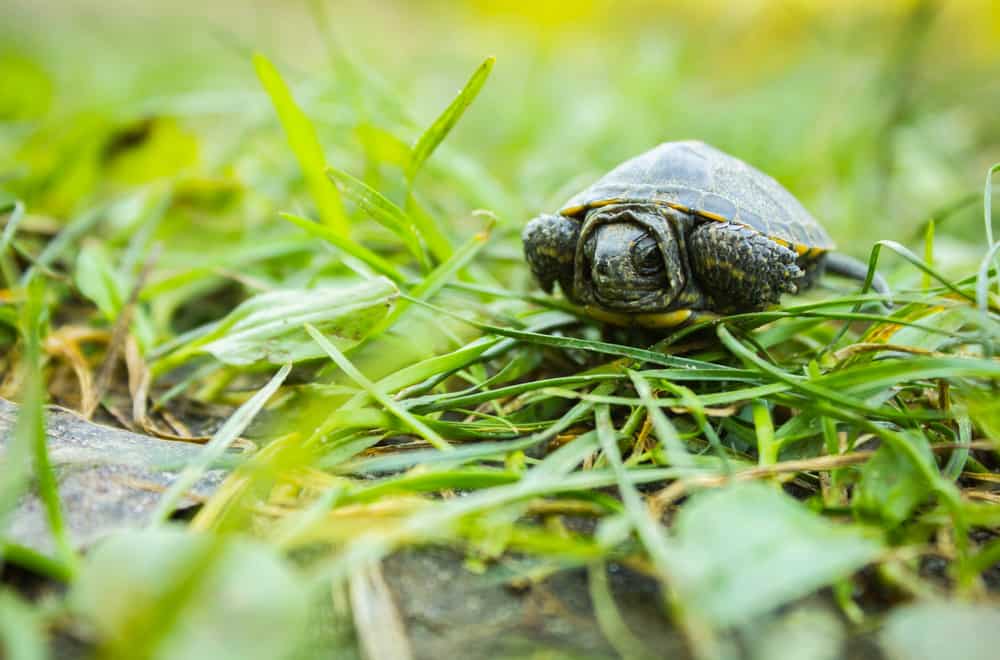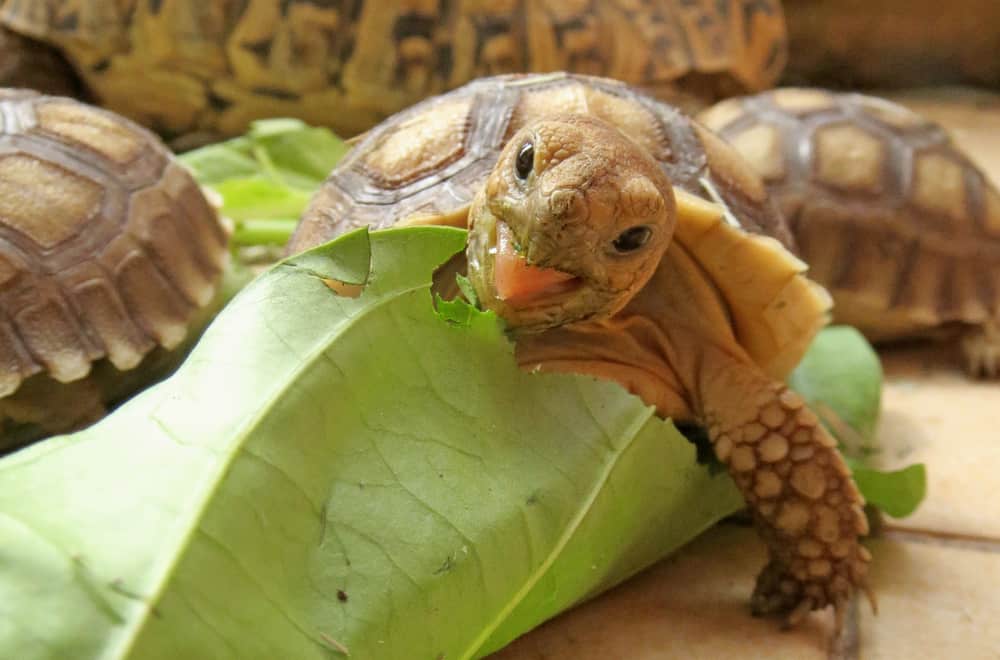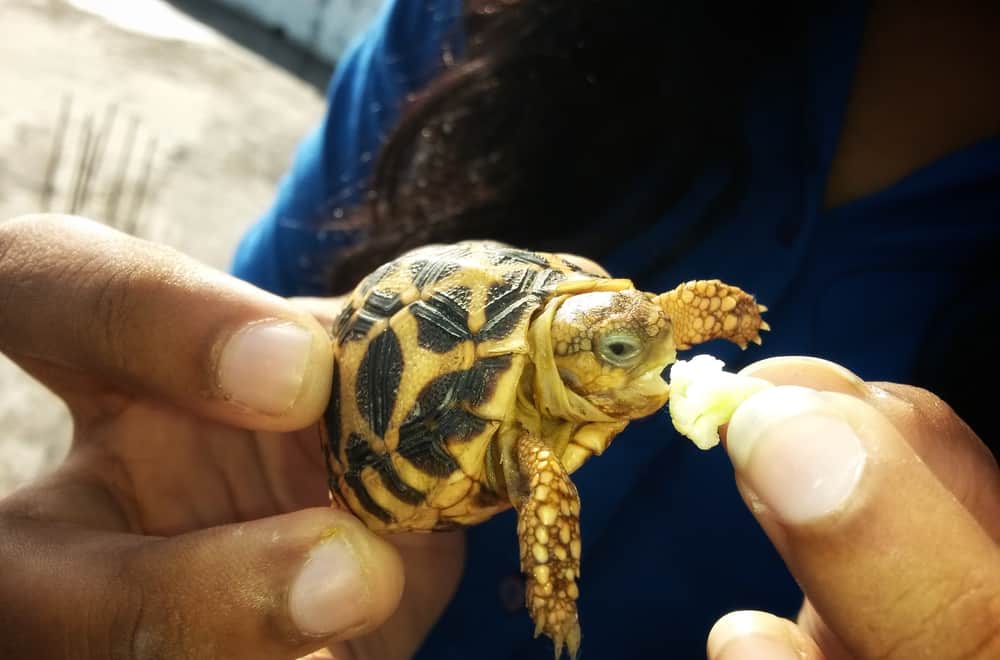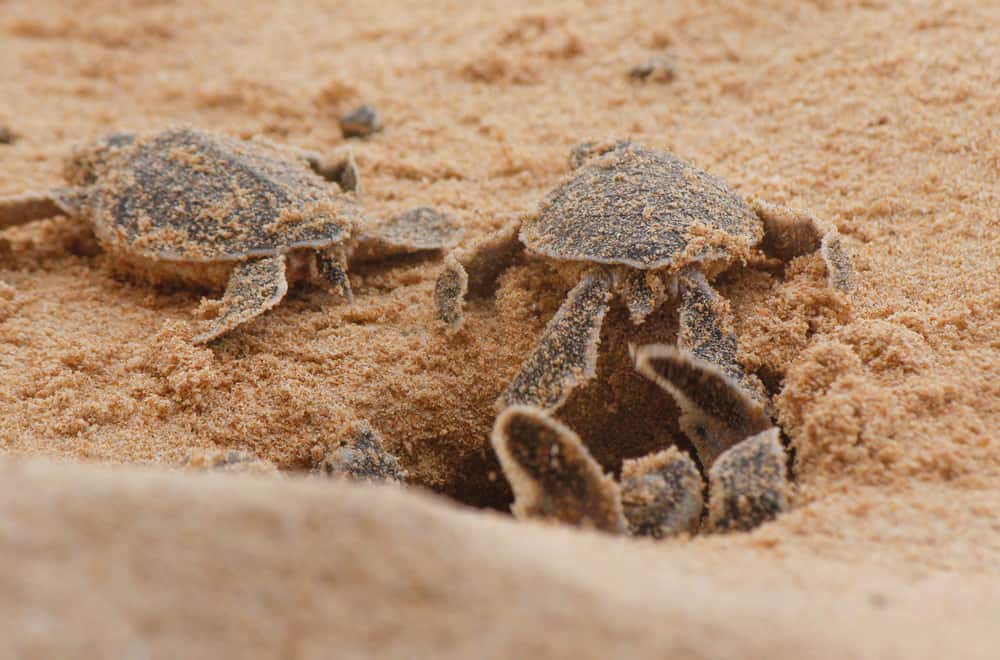There are over 300 known turtle species. What is your baby turtle’s species? These animals eat what they can find in their natural habitat.
If you don’t know your baby turtle’s species, first, find out whether he/she is an omnivore, carnivore, or herbivore.
Fair warning, turtles are cool exotic pets that come with high maintenance. Are you ready for the task?
Let’s dive in!
Baby Turtle Habits And Biology
Baby turtles are called hatchlings. They are reptiles and cold-blooded. That means you will have to regulate your animal’s temperatures. At extremely low temperatures, they can’t function. At high temperatures, they suffer. Keep them warm.
Turtle Shells
Turtles can’t get out of their shells. The turtle’s shell is connected to its skeleton and vertebrae. The shell has over 50 bones, including the ribcage.
The shell grows with the turtle. It is covered in scutes that shed as the turtle grows. You can do creative stuff with the scutes.
How Turtles Breathe
Baby turtles breathe through their lungs. You will spot the external nares in front of their face. They have to come above the water to breathe. But when they go under, pet turtles can last more than 30 minutes without coming back up for another breathe. Sea turtles last hours underwater!
Turtles Have Beaks
The prehistoric turtles did have teeth, but not anymore. The current turtles have beaks, and they bite with these. If your baby turtle is the snappy alligator turtle, do not feed her with your fingers.
Turtle Habitats
You will find turtles all over the world, except in Antarctica. Most turtles spend some time in the water. Land turtles are different from water turtles. While land turtles (like the box turtles) have webbed feet, sea turtles have flippers to swim quickly. Sea turtles only come to the beaches to hatch; right before abandoning the eggs.
Between the sea turtles and land turtles, we have aquatic turtles like the famous red-eared slider turtle. Land turtles are considered semi-aquatic.
Turtles Are Not Pets
Turtles are neither cuddly nor social. They don’t even like to interact with other turtles. Once you place them in an aquarium, only remove them when feeding or cleaning. Moving them around is pretty stressful.
Turtles are only good to watch them swim and feed them. But rearing a baby turtle protects turtles from extinction. Most baby turtles die in the first days of their lives. They are very fragile.
Did You Know This About Turtles?
Turtles existed way before humanity! They have been around since the age of dinosaurs. And they can outlive you.
It’s a shame that humans have played a big part in reducing the number of turtles worldwide.
Even a tortoise is a type of land turtle.
Do Baby Turtles Eat Dirt?
Sea turtles do not eat dirt. But land turtles that spend their time in ponds? They do! They may eat dirt when craving minerals like calcium. Soil is rich in calcium. Or they may collect sand while snacking.
You may notice your baby turtle eating soil in the turtle tank. That could be because he confused dirt for food. A little dirt is not poisonous. The only challenge with eating dirt is impaction from eating excess dirt.
If your little guy is eating dirt, offer some food. Turtles spend their day swimming, looking for food, and eating it. They are wild animals.
What Do Baby Turtles Like to Eat Most?
Turtle pellets are a baby turtle’s favorite meal. They are easy to chew and swallow.
Baby turtles, no matter whether herbivores or carnivores, start as omnivores. A hatchling’s diet is mostly protein and calcium (in animals). But as they grow older, they switch to a more plant-based diet.
Only tortoises are exclusively herbivores from the hatchling till old age.
Nonetheless, some turtles like the snappy alligator are more carnivores. They have strong jaws to crush their prey. They are predators.
The best thing about turtles is that they are opportunistic feeders. Their survival instinct tells them to eat whenever they can. So very likely, they will adapt to any meal, and even keep begging for more and more.
What To Feed Your Baby Turtles?
- Proteins and calcium. Protein accelerates the turtle’s growth, and calcium takes care of the bones. But be careful not to overdo or underdo anything. Moderation is key.
- Baby turtles love to eat turtle pellets. Commercially processed turtle pellets have the right balance of proteins (moderate), phosphorous(low), calcium(high), cabs(low), and other essential nutrients. They are mostly animal matter.
Some of the best pellets to feed your baby turtles include:
- Zoo Med Pellets
- Wadley fish pellets. Rearing a turtle is pretty close to petting fish. If you have fish supplies, use those.
- Repto Min sticks.
These pellets are great, but don’t rely solely on them. Remember that your baby turtle is a wild animal. In their natural habitat, turtles eat snails, worms, even plants.
So, as you give your hatchlings commercial pellets, also offer natural meals. Look at your baby turtle’s mouth. What can she handle?
- Catch some crickets, mealworms, earthworms, shrimps, grasshoppers, or caterpillars, and chop them into pieces that won’t chock your little friend.
- Plants? Absolutely! Even though your hatchling will not show any interest in the plants for the first weeks, you should offer the plants. Let your hatchling smell and know about plants.
Introduce your hatchlings to vegetables like:
- Dandelion greens
- Water lettuce
- Romaine lettuce
- Cooked carrots
- Strawberries. Adult turtles love strawberries.
If you give your baby turtle papaya, remove the seeds. You can even blend the vegetables.
Always add calcium sources like processed calcium powder, crushed eggshells, or cuttlebone.
Mix up different pellet brands plus natural things. The most important thing about feeding your baby turtle is variety and moderation.
Eating the same food every day is boring, even for a turtle. You can add some fun into the meal by throwing in small live worms. It will also exercise the turtle. These are occasional treats. Don’t let her get used to the good stuff, else you will have a picky eater.
If you own a carnivore pet turtle, give more flesh, and if you own a herbivore, give more plants. If you own an omnivore, give both plants and animals.
Food Avoid To Feed Feeding A Baby Turtle
Avoid giving your hatchlings the following foods:
- Citrus fruits. Oranges and lemons irritate their digestive tract.
- Raw meat. Raw meat often carries salmonella that also infects turtles. Turtles are also salmonella carriers!
- Goldfish. These have thiaminase (an enzyme) that destroys the much-needed vitamin B1.
- Shellfish. These may have a harmful bacterium that rots the turtle’s shells.
- Toxic plants like ivy, nightshade, mistletoe, foxglove, aconite, azalea, sweet pea, and oleander.
- Dairy products. Reptiles do not consume or digest dairy products.
- Processed sugary things like chocolates and candy. Stick to natural products.
Caution With Live Feeds.
Live feeds often come with parasites, pesticides, and infections. If you will use live feeds, either catch them yourself, breed them, or buy from reputable pet stores to avoid chemicals.
Live feeds that like crabs and scorpions can harm your pet.
Tips to Feed Baby Turtles
- Baby turtles can stay weeks after hatching before ever taking a meal. It’s okay. Be patient. These adorable creatures can last long without food.
- If your turtle refuses to eat, try moving them to a smaller tank. You can also try reptile stimulants to jumpstart their appetite. If all fails, let a turtle expert examine your pet.
- Feed your turtle in a separate shoebox filled with water up to an inch higher than your turtle’s shell width. Feeding separately reduces pollution in the aquarium. It is also great if your turtles associate the show box with feeding. It creates a feeding routine.
- Always feed your turtles in the water. The water soaks up the pellets, and it also helps the turtle to swallow the food.
- If the water temperature is too low, your turtle may not feel like eating. Use an aquarium heater to raise the temperatures to anywhere between 75 to 82 degrees Farenheight. High temperatures make them active and eat more.
- Your turtle may choose not to eat when you are watching them. In such a case, leave the turtle with the food then come back later to empty the leftovers.
- Even when you have land turtles (like a box turtle), always provide a place to soak up.
- Wash your hands whenever you handle your turtle to prevent spreading salmonella.
Frequently Asked Questions
1. Can Baby Turtles Get Attached To Their Owners?
Turtles have poor short-term memory, but they don’t forget things that help them survive. Your pet turtle may recognize you, not as the owner, but more like the food source. They have an excellent long-term memory to remember you even after a long absence
2. What Do Baby Turtles Need?
- Clean water
- Heat
- UV-B and UV-A rays
- Variety of food that is as close to its natural thing.
- Calcium and vitamin D3 to help in calcium absorption.
- A basking spot.
3. Are There Human Foods That Baby Turtles Eat?
Yes. You can give your hatchling boiled chicken, egg whites, and turkey. You can also feed them with canned (in water) tuna and salmon.
4. How Often Do You Feed A Baby Turtle?
Feed your baby turtles at least once every day. Feed them as many pellets as would fit inside their head if it was hollow.
5. Do Baby Turtles Need Water?
Yes, baby turtles need water to soak up and stay hydrated.
6. Do Baby Turtles Drink Water?
Yes, turtles drink the water that they swim in. That is why you should invest in an efficient filtration system to clean up the water regularly.
7. How Much Water Should You Put In A Baby Turtle Tank?
You need 10 gallons of water per turtle’s inch. Red-eared sliders require a minimum of 20 gallons of water.
7. Which Baby Turtles Stay Small When Adults?
According to Reptile Guide, these turtles will stay small even as adults:
- Mississippi mud turtles
- Bog turtles
- Common Musk turtles
- Michigan spotted turtles
- Reeves turtles
8. Can Baby Turtles Drown?
Yes, baby turtles can drown, especially if you put them in very deep water.
9. Will A Baby Turtle Eat Your Fish?
Yes, baby turtles will eat your small fish. If you have a red-eared slider, it will very likely eat the small fish you put in your aquarium.
Summary
Baby turtles are omnivores. As hatchlings, they prefer more animal matter. You can expect your hatchlings to eat vegetables from the tenth week.
Baby turtles start out as animal lovers and grow up to be plant lovers.
If at any point you feel that you don’t want the turtle pet, do not set it free outside your yard. Instead, contact an animal rescue center. They will take it from there.
